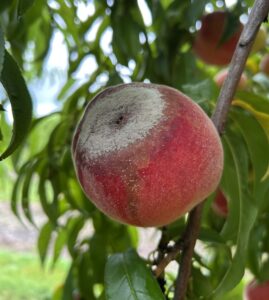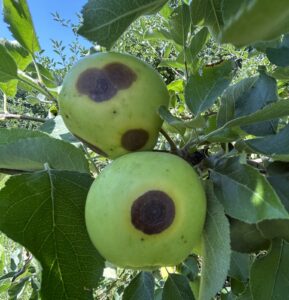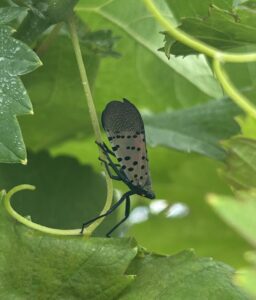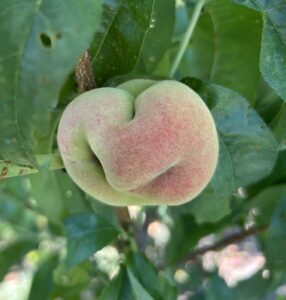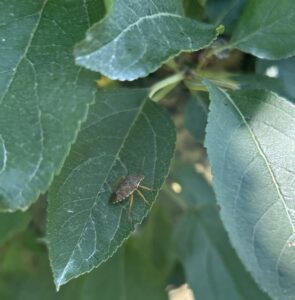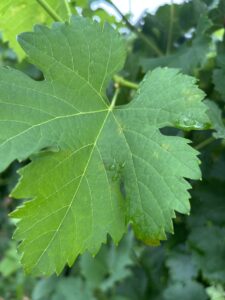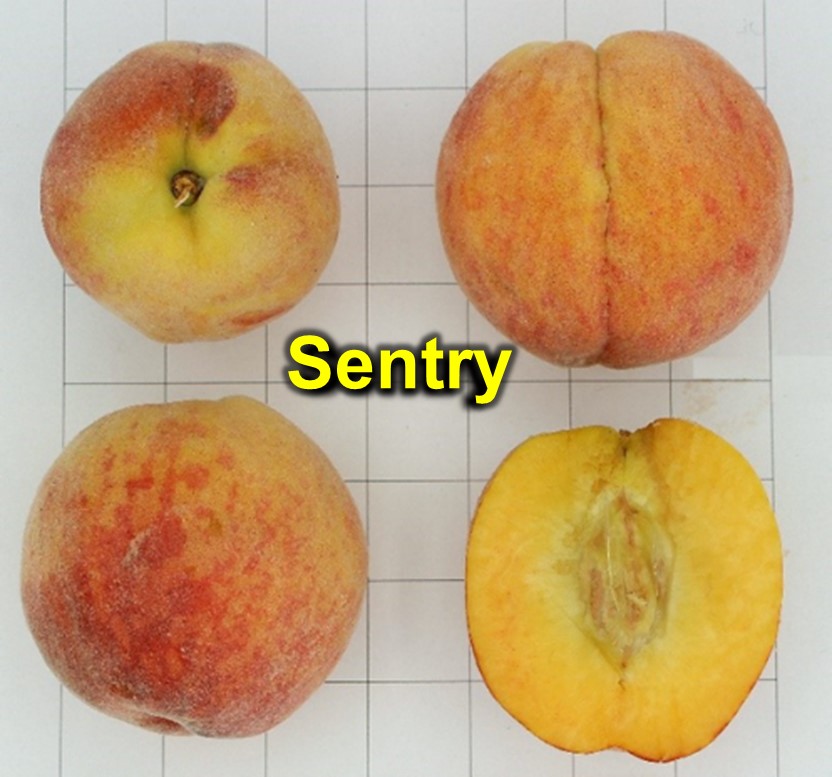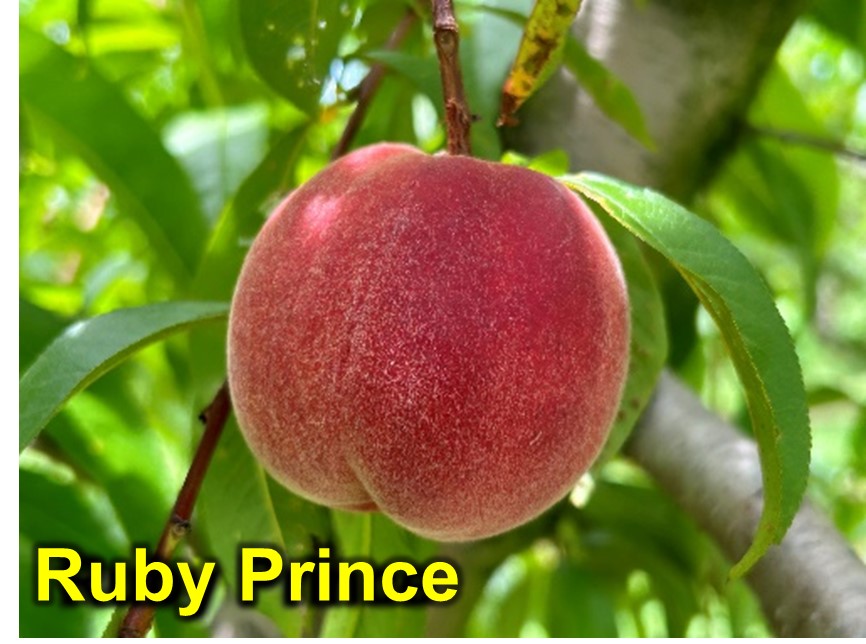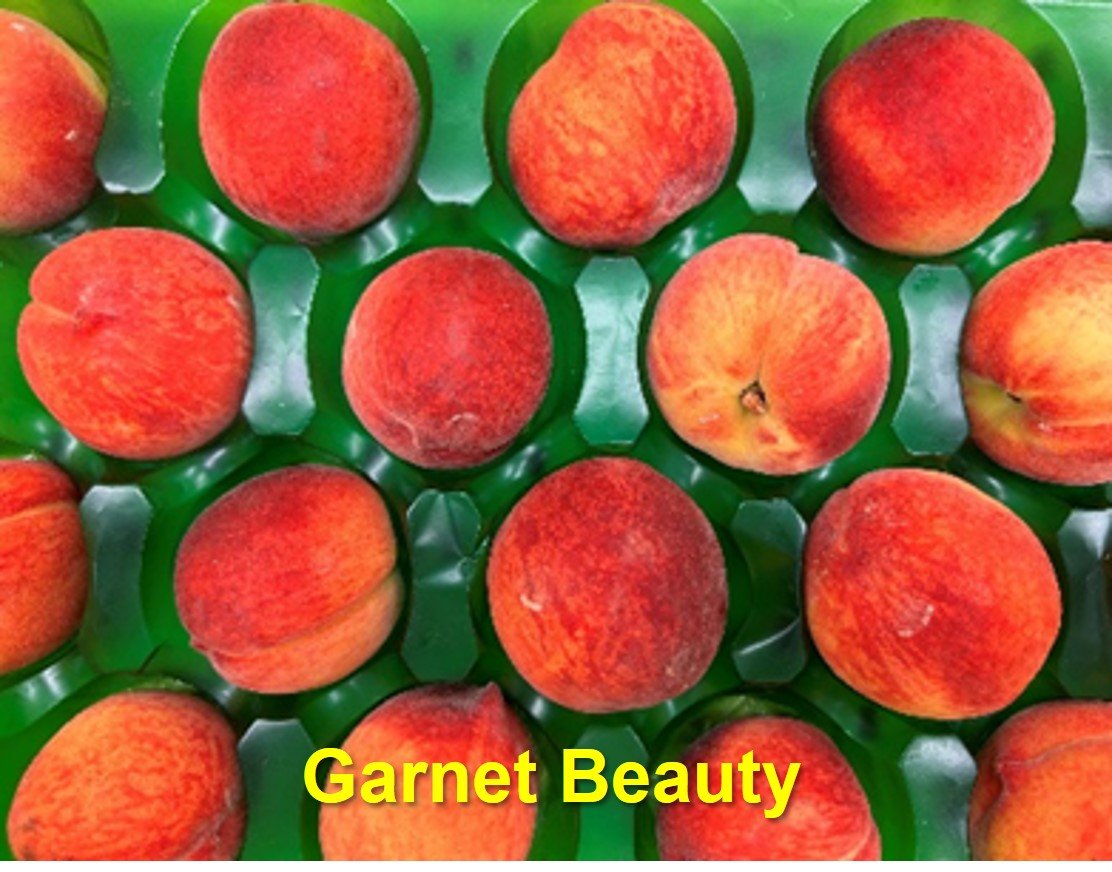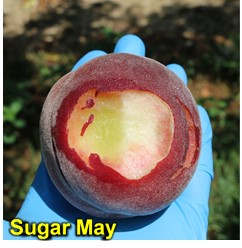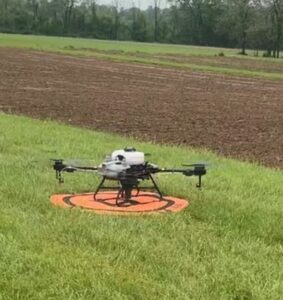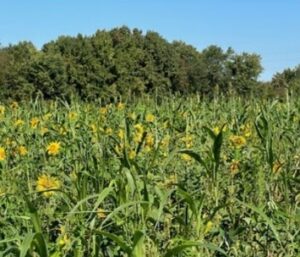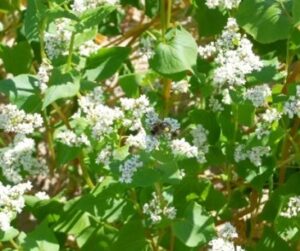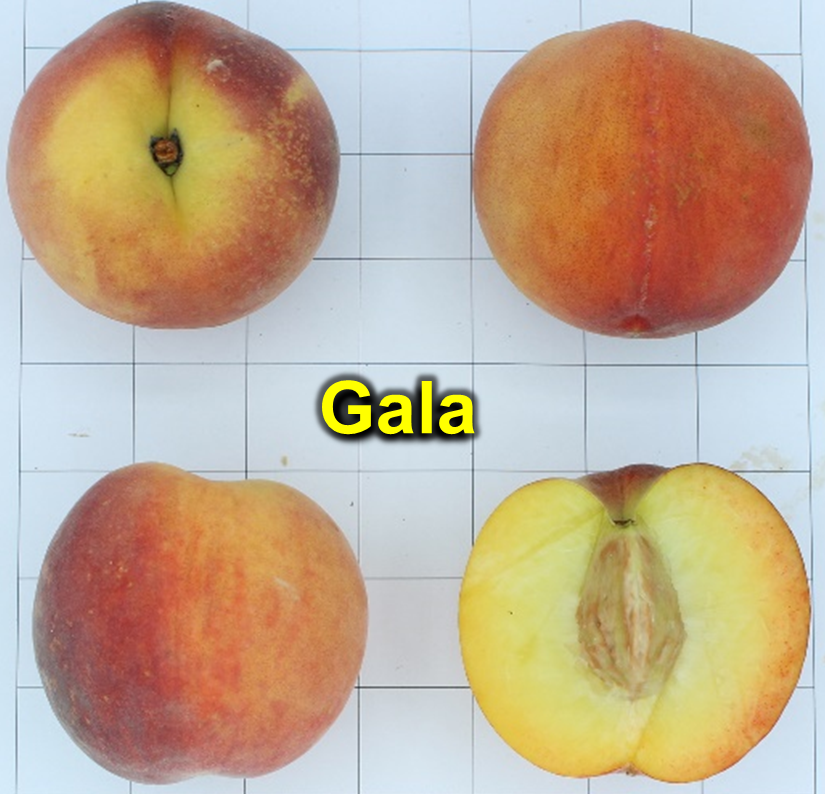 GALA is a medium to medium-large, globose, 70-90% scarlet red over yellow-orange ground color, yellow-fleshed, semi-freestone peach ripening July 11-15, about a week after the Sentry. The flesh is firm, with a sweet and mildly tangy flavor. The tree is vigorous and moderately productive. Note that these varieties were evaluated in southern New Jersey; as a result, the harvest dates could be a few days later for the Central and Northern New Jersey orchards.
GALA is a medium to medium-large, globose, 70-90% scarlet red over yellow-orange ground color, yellow-fleshed, semi-freestone peach ripening July 11-15, about a week after the Sentry. The flesh is firm, with a sweet and mildly tangy flavor. The tree is vigorous and moderately productive. Note that these varieties were evaluated in southern New Jersey; as a result, the harvest dates could be a few days later for the Central and Northern New Jersey orchards.
Challenges: Gala is a beautiful peach in a great season, but the size and yield could be highly variable. Split pits are a problem even in a normal year, and the first pick may have significant split pits. Fruit has medium susceptibility to bacterial spot.
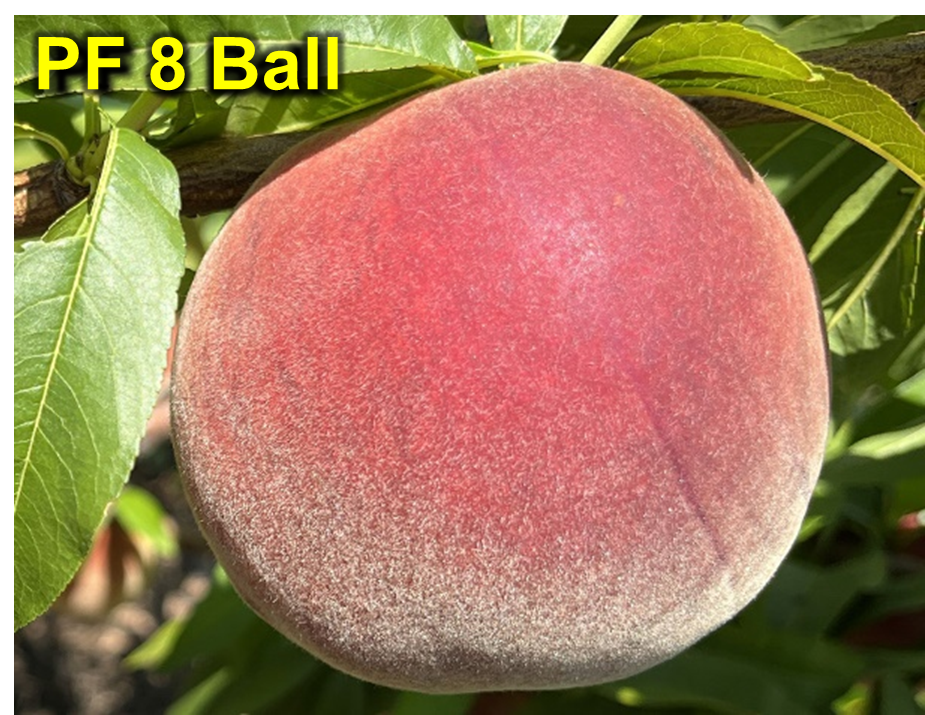 FLAMIN FURY® PF#8 BALL is a large, globose, 70-90% crimson red over greenish-yellow ground color, yellow-fleshed semi-clingstone peach with prominent suture groove, ripening during July 13-18. The fruit is firm, with melting, sweet, juicy flesh, and has a sweet and tangy flavor. The tree is spreading, vigorous, and productive, with medium susceptibility to bacterial spots. A promising variety because of its color and size. A good option to replace Gala peach.
FLAMIN FURY® PF#8 BALL is a large, globose, 70-90% crimson red over greenish-yellow ground color, yellow-fleshed semi-clingstone peach with prominent suture groove, ripening during July 13-18. The fruit is firm, with melting, sweet, juicy flesh, and has a sweet and tangy flavor. The tree is spreading, vigorous, and productive, with medium susceptibility to bacterial spots. A promising variety because of its color and size. A good option to replace Gala peach.
SUMMER SERENADE is a medium-large, globose to ovate, attractive, 50-70% crimson red over yellow-green ground color, yellow-fleshed, semi-clingstone peach ripening from July 13-16, approximately 11 days before Redhaven. The flesh is firm with fair to good flavor. The tree is moderately vigorous and productive, with low susceptibility to bacterial spot. Summer Serenade has a better size than Garnet Beauty and PF 7, with a significant suture groove and flavor like Garnet Beauty.
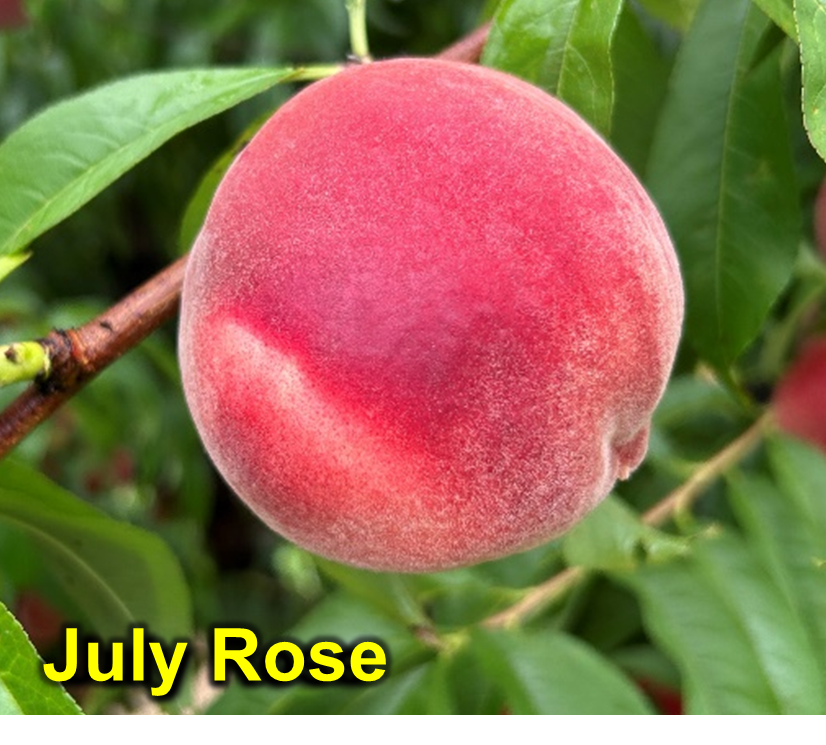 JULY ROSE is a popular white fleshed peach with excellent firmness, cling stone, and low fuzz. Fruit is large and attractive, and ripens between Sugar May and White Lady from 15-20 July. Fruit is always very sweet and sub-acid. It has good fruit and leaf resistance to bacterial leaf spot. Even poorly thinned trees tend to produce large-sized fruit. Moderate fruit or bloom thinning will be required to optimize size and quality. Fruit hangs well and has better cold-hardiness than other white varieties.
JULY ROSE is a popular white fleshed peach with excellent firmness, cling stone, and low fuzz. Fruit is large and attractive, and ripens between Sugar May and White Lady from 15-20 July. Fruit is always very sweet and sub-acid. It has good fruit and leaf resistance to bacterial leaf spot. Even poorly thinned trees tend to produce large-sized fruit. Moderate fruit or bloom thinning will be required to optimize size and quality. Fruit hangs well and has better cold-hardiness than other white varieties.
 Snowbrite is a good white-fleshed peach that ripens a few days after July Rose but is highly susceptible to bacterial spots. Scarlet Pearl is another good white-fleshed peach. However, it is a cold, tender variety and produces split pits.
Snowbrite is a good white-fleshed peach that ripens a few days after July Rose but is highly susceptible to bacterial spots. Scarlet Pearl is another good white-fleshed peach. However, it is a cold, tender variety and produces split pits.
FLAMIN FURY PF LUCKY 13 is a large, globose to slightly ovate, heavy scarlet red over orange-yellow ground color, yellow-fleshed, freestone peach ripening near or earlier than Redhaven. The flesh is crunchy, firm, and sweet and tangy. The tree is vigorous and productive, with slight drop and inking tendencies and low to moderate susceptibility to bacterial spots. This very attractive peach has also shown good size and minimal splits.
Previous related articles
- Early July Peach Varieties: https://plant-pest-advisory.rutgers.edu/early-july-peach-varieties-sentry-glenglo-ruby-prince-garnet-beauty-and-sugar-may/
- Late June Peach Varieties: https://plant-pest-advisory.rutgers.edu/late-june-peach-varieties-for-new-jersey-new-and-standard/


